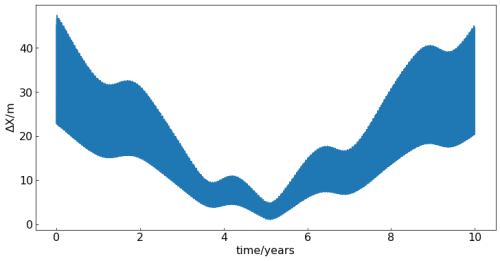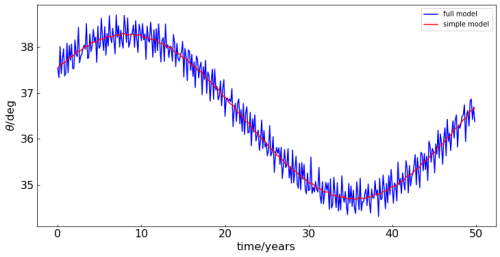The Applied Astronomy Group at Yunnan Observatories has developed a comprehensive dynamical model for Deimos, one of Mars’ moons, incorporating the rotational effects. The findings have been published in the international journal Remote Sensing under the title “Dynamical Model of Rotation and Orbital Coupling for Deimos”.
Studying the Martian moons is essential for understanding the formation and evolution of terrestrial planet systems. Numerical ephemerides of Martian moons are crucial tools for exploring the Martian system. Among the various numerical ephemeris available, the model established by the National Aeronautics and Space Administration (NASA) scientist Jacobson in 2010 is widely adopted. This model considers multiple factors affecting the orbit motion of the Martian moons, including the libration of Deimos’ smallest inertia axis within its orbital plane.
The recent study by Yunnan Observatories has expanded on this previous work by thoroughly considering the rotation of Deimos in inertial space, induced by the torques from major bodies in the solar system. The researchers have established a dynamical model that couples Deimos’ rotational and orbital dynamics. Initially, the rotational motion of Deimos can be expressed by Euler’s rotational equations and integrated in parallel with the equations of the orbital motion of Deimos around Mars. Subsequently, the researchers computed the analytical solution of the coupling between orbit and rotation. By fitting the full model to a simulated simplified counterpart, the influence of rotational effects on orbital dynamics was investigated.
Numerical simulations indicate that the predictions made by this new model are stable and reliable. Unlike the simpler existing models, which primarily attribute Deimos’ axial motion to precession, the new model reveals more complex oscillation in the moon’s axial motion within an inertial reference frame.
This advancement in the dynamical model of Deimos lays a crucial foundation for the development of a new generation of precise numerical ephemerides. Additionally, it provides valuable experience for the establishment of dynamical models for other major celestial bodies within the solar system.
This research was supported by the National Natural Science Foundation of China, the National Key Research and Development Program of China, the International Partnership Program of Chinese Academy of Sciences, and the Yunnan Province Foundation.

Figure 1 The difference between the new dynamical model's precise orbit and the position from the current ephemeris MARS097. Image by HUANG Kai.

Figure 2, the difference in the orientation of the poles of Deimos between the current simple model and the newly developed model. Image by HUANG Kai.
Contact:
HUANG Kai
Yunnan Observatories, CAS
E-mail:huangkai@ynao.ac.cn